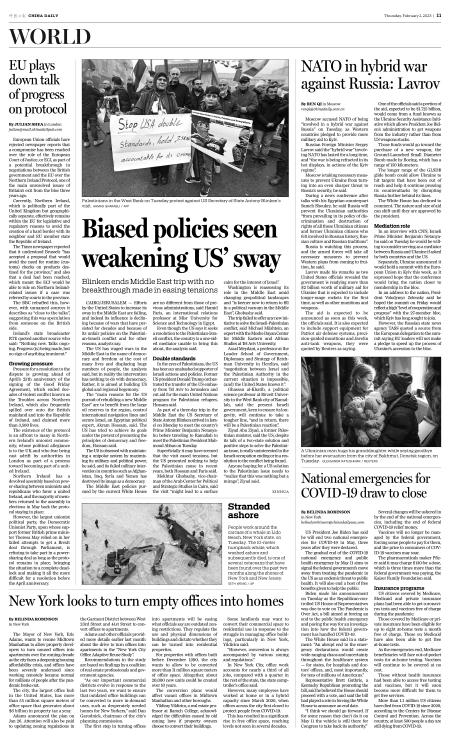The Mayor of New York, Eric Adams, wants to rezone Midtown Manhattan to allow property developers to turn unused offices into apartments over the coming decade as the city faces a deepening housing affordability crisis, and offices have been severely underused since working remotely became normal for millions of people after the pandemic broke out.
The city, the largest office hub in the United States, has more than 55 million square meters of office space that generates about $6 billion in property tax a year.
Adams announced the plan on Jan 26. Attention will also be paid to updating zoning regulations in the Garment District between West 23rd Street and 41st Street to convert offices to apartments.
Adams and other officials provided more details earlier last month about the drive to turn offices into apartments in the "New York City Office Adaptive Reuse Study".
Recommendations in the study are based on findings by a coalition of real estate professionals and government agencies.
"As our important commercial districts evolve in response to the last two years, we want to ensure that outdated office buildings can be converted to more in-demand uses, such as desperately needed homes for New Yorkers," said Dan Garodnick, chairman of the city's planning commission.
The first step in turning offices into apartments will be easing what officials say are outdated zoning restrictions. They regulate the use and physical dimensions of buildings and dictate whether they can be turned into residential properties.
For properties with offices built before December 1990, the city wants to allow to be converted more than 11 million square meters of office space. Altogether, about 20,000 new units could be created over 10 years.
The conversion plans would affect vacant offices in Midtown Manhattan and other boroughs.
Yildiray Yildirim, a real estate professor at Baruch College, acknowledged the difficulties caused by old zoning laws if property owners choose to convert their buildings.
Some landlords may want to convert their commercial space to residential use in response to the struggle in managing office buildings, particularly in New York, Yildirim said.
"However, conversion is always accompanied by various zoning and regulations."
In New York City, office work accounts for nearly a third of all jobs, compared with a quarter in the rest of the state, the state comptroller's office said.
However, many employees have worked at home or in a hybrid capacity since March 2020, when offices across the city first closed to protect people from COVID-19.
This has resulted in a significant rise in free office space, reaching levels not seen in several decades.

